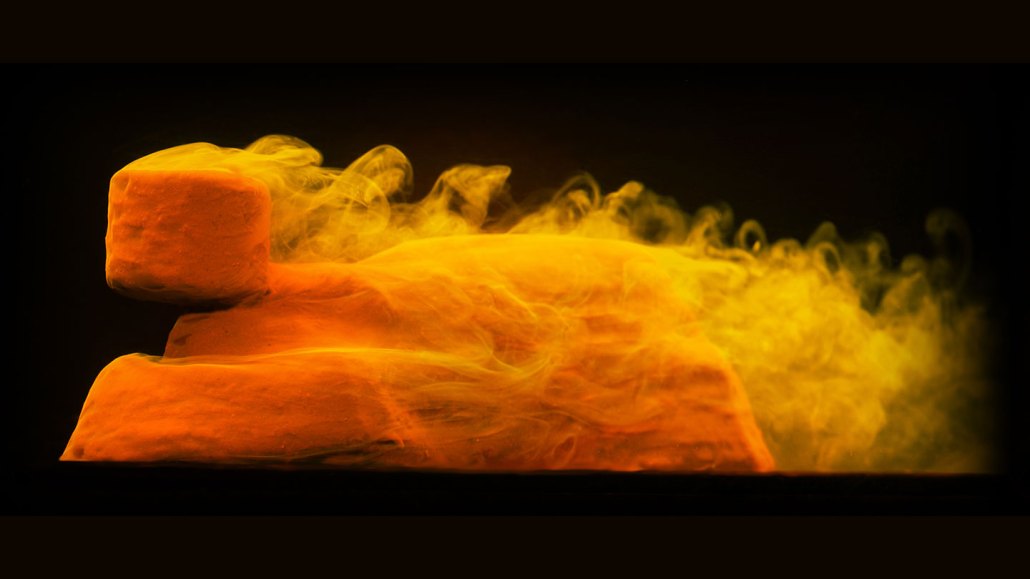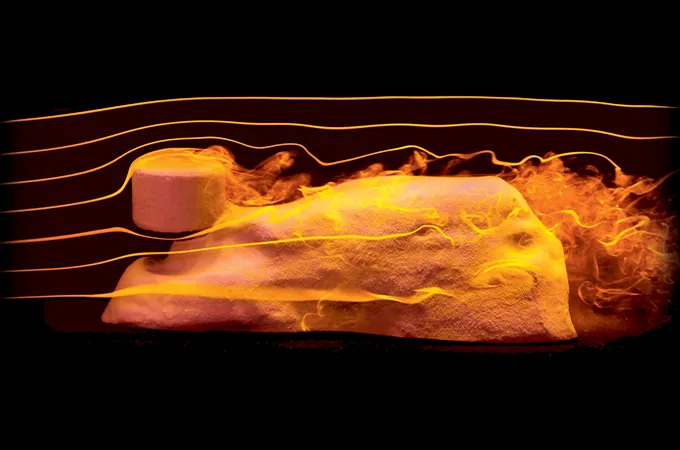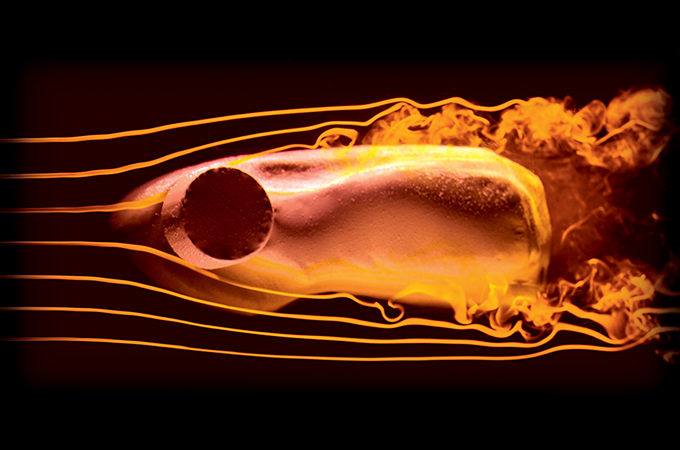
Particles laced with fluorescent dye light up water currents that swirl around a clay-coated, 3D-printed sphinxlike object, showing how wind might help carve similarly shaped objects in some desert environs.
Applied Math Lab/NYU
The Great Sphinx of Giza might have been sculpted by desert winds long before it was ever touched by human hands.
Mysterious desert landforms called yardangs can bear an uncanny resemblance to seated lions — so much so that some researchers think one lionlike yardang might have had the honor of later being carved into the Sphinx by ancient Egyptians. The basic ingredients for these unusual rock formations might be rather simple, researchers report in the November Physical Review Fluids. Scientists were able to reliably sculpt hand-sized, sphinx-shaped yardangs from clay globs in a water tunnel so long as two basic conditions were met: consistent prevailing winds and a starting blob containing a mix of easily eroded and more resistant bits.
“This just came completely out of left field,” says geomorphologist Elena Favaro of the Open University in Milton Keynes, England, who was not involved in the study. Scientists aren’t sure exactly how yardangs start to form, but they appear in desert regions where winds wear exposed rock down into long, streamlined ridges facing into the prevailing winds. The study, Favaro says, is “a very inspired way to approach the problem” of how yardangs form.
Curious about how nature produces sphinxlike yardangs, New York University applied mathematician Leif Ristroph decided to take the question into his lab. He and his team study how natural shapes grow and change by compacting ages of erosion into experiments that last a few hours. They do this in a water tunnel, which is typically used to study fluid flow around stiff objects like wings.
“What we do, which is kind of abusive of the device,” Ristroph says, is “put things like a piece of ice in there and look how it changes shape” — or, “in this case, a chunk of mud.”
The team subjected their water tunnel to hundreds of muddy trials. Each time, they started with a stiff clay paste, sculpted it into a starting glob, embedded the glob with bits of hard plastic to represent harder parts of natural rock, and plopped the globs into the water tunnel to erode under a steady water “wind.”
Their setup reliably produced sphinxlike mini-yardangs. The initial shape of the glob and placement of the hard plastic bits didn’t matter much, so long as the plastic bits were in the windward half.
But because the sphinxes dissolved quickly, the team had to get creative to take pictures of the fluid flows that sculpted them. The researchers scanned their mini-yardangs and 3D-printed reusable plastic models of the forms. Before each experiment, they coated the plastic models with a thin veneer of clay laced with fluorescent dye.
In the water tunnel, the glowing clay allowed the researchers to trace the whorling currents around the blob. This revealed a few patterns that the team is now working to model mathematically, including a turbulent “mane” of eddies cast from behind the sphinx’s head that carves out a sloping, feline spine. Whether centimeter-scale blobs in water say anything about landscape-sized rocks eroded by wind is a question Ristroph hopes the new study can tempt geomorphologists into answering.








